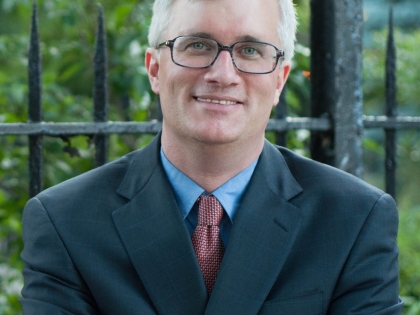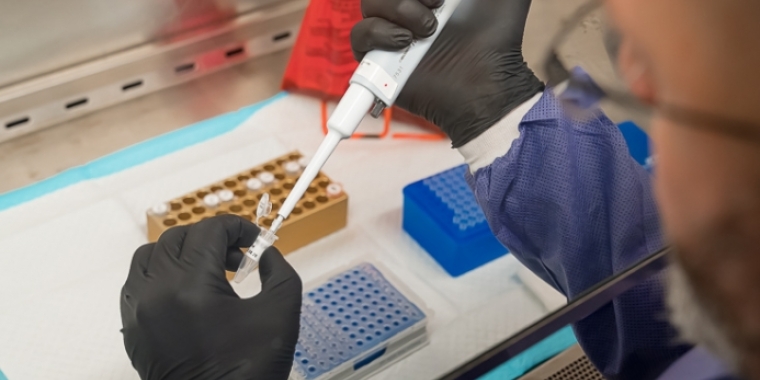
Kavanagh, Legislators Call on City & State Health Departments to Provide Information on Delta Variant and Relevant Safety Plans
July 16, 2021

_______________
July 16, 2021
Dr. Howard Zucker
Commissioner of Health
New York State Department of Health
Corning Tower
Empire State Plaza
Albany, NY 12237
Dr. Dave A. Chokshi
Commissioner of Health
New York City Department of Health and Mental Hygiene
125 Worth St
New York, NY 10013
Dear Dr. Zucker and Dr. Chokshi:
We had much to celebrate and to be proud of throughout the State of New York on Independence Day. After enduring fifteen tedious months of state-of-emergency restrictions and safety measures, multiple surges, and hardship, we have managed to decrease considerably our COVID-19 case, hospitalization, and fatality rates. At the same time, with the rapid spread of the Delta variant, positivity rates on the rise again, and the percentage of New York State residents who are unvaccinated or partially vaccinated, our current public health status is tenuous and unpredictable. In order to sustain the remarkable progress we have made, and to prevent losing ground, we must be prepared to respond rapidly if necessary to prevent another surge. We write to request information about the status of the Delta variant in New York State, as well as the plan to protect public health should our COVID-19 numbers continue to rise.
We commend and are grateful to the NYS and NYC Health Departments for your ongoing, tireless work testing, vaccinating, informing, and protecting New Yorkers from the Coronavirus during these challenging times. Throughout the pandemic, COVID-19 data sharing and utilization of public health indicators have been vital to assessing the need for safety measures and managing the virus. We are concerned that there has been limited public messaging regarding Delta variant cases in the state, and discussion of preventive measures have focused almost exclusively on getting more New Yorkers vaccinated, while Israel and Los Angeles have recently reinstituted mask wearing indoors. The pandemic has demonstrated that safety measures such as mask wearing and social distancing are effective means to manage community transmission, especially when implemented before infection rates become excessively high.
The pandemic has underscored how rapidly new strains of the Coronavirus travel, become dominant, and impact public health. At the time of this writing, the Delta variant has made its way to more than 100 countries, and is the cause of approximately 57.6% of COVID-19 cases in the U.S. and 69% of cases in New York City as of July 3, based on available sequencing data. These calculations may fall below actual percentages due to decreased rates of COVID-19 testing.
A public health specialist observed that the U.S. tends to follow the same path as the U.K., but a month behind. In the U.K., which delayed relaxing safety measures due to surging case numbers, the Delta variant accounts for at least 99% of infections, cases have surged 79% over the last two weeks despite the fact that 53% of the population is fully vaccinated and 69% of residents have received at least one dose. The U.K.’s 7-day average of new daily cases is now over 34,000, rising from 3,000 in late May. Britain’s health secretary recently said that daily case rates could rise as high as 100,000 later this summer.
On Friday, June 25, World Health Organization (WHO) officials acknowledged that relaxing safety measures in certain countries results in a corresponding trend of outbreaks and surges in COVID-19 cases and community spread around the world. While global vaccination rates remain low and community transmission persists, WHO officials recommended that individuals worldwide should continue wearing masks, social distancing, and following other safety measures to help manage spread of the virus and decrease the capacity for further variants to mutate.
Israel and Los Angeles have recently reinstated mask wearing in public indoor settings for vaccinated and unvaccinated individuals in response to Delta-driven increases in COVID-19 case rates. In Israel, where 56.12% of the population has been fully vaccinated and the positivity rate is 1.5%; they have been tracking an increase in new cases (over 850 on July 15), and decided to reinstate their mask-wearing requirement in anticipation that case numbers would otherwise continue to increase exponentially. In Los Angeles, mask-wearing requirements for vaccinated individuals were lifted on June 15; since then, public health officials have been monitoring an uptick, which escalated to a surge in cases caused by the Delta variant, including among vaccinated and unvaccinated individuals. The 7-day average positivity rate is over 2.5%, the number of daily cases is above 1,500, and 61% of eligible Los Angeles residents above the age of 16 have been fully vaccinated. The Los Angeles County Public Health Department had previously issued statements urging everyone to wear masks in public indoor spaces; however, as a result of continued community transmission and surging case numbers, vaccinated and unvaccinated individuals will be required to wear masks indoors as of July 17 at 11:59 p.m.
As a domestic and international travel hub, and densely populated city with many multi-person households, New York City has inevitably been subject to multiple viral onslaughts. COVID-19 statistics in New York City are not far behind those in Israel and Los Angeles, and the percentage of fully vaccinated residents is slightly lower. Currently, 53.1% of eligible NYC residents are fully vaccinated; the 7-day average positivity rate has been steadily increasing and was 1.44% as of July 14; and the number of daily cases just leapt above 600 after remaining in the 200-300’s for a period of time. Statewide, the 7-day average positivity rate was 1.09% as of July 15; the number of daily cases is nearing 1000; and 55.7% of eligible residents are fully vaccinated. The prevalence of the Delta variant is unknown due to lack of publicly available data.
Throughout the pandemic, New York has aligned state COVID-19 guidance with CDC precedent while taking into account local considerations. At this time, the CDC continues to assert that mask wearing and other safety measures are critical for unvaccinated individuals, while vaccinated individuals are protected from severe health outcomes. It is important to note, however, that during the July 1 White House COVID-19 Response Team briefing, Dr. Fauci acknowledged this does not exclude local entities from making recommendations as needed.
Even though the state of emergency has been lifted, the pandemic is far from over, which means that we face the potential for additional surges, as well as the threat of increasingly harmful Coronavirus mutations. In order to respond to constituent inquiries and to protect public health, we respectfully request the following information:
- The percentage of positive COVID-19 samples being sequenced statewide and by county.
- The percentage of COVID-19 cases, hospitalizations, and fatalities caused by the Delta variant statewide and by county.
- Should NYS and/or NYC COVID-19 rates continue to increase, what the plan is to protect the progress we have made and prevent another surge? Is recommending or requiring mask wearing in public indoor settings being considered? In terms of public health indicators, what level of COVID-19 positivity, daily case, and hospitalization rates would trigger activating additional safety measures? With New York Times reporting of contact tracing efforts being reduced in New York City, will we have the necessary capacity to handle a surge in cases?
We know that protecting public health in New York is a shared priority and appreciate your attention to the concerns and request for information detailed in this letter. We look forward to receiving your response which will enable our offices to effectively address public health needs.
Thank you,
New York State Senate
Joseph P. Addabbo
Alessandra Biaggi
Samra G. Brouk
Jeremy Cooney
Andrew Gounardes
Brad Hoylman
Brian Kavanagh
Liz Krueger
John C. Liu
John W. Mannion
Elijah Reichlin-Melnick
Gustavo Rivera
James Sanders, Jr.
Jose M. Serrano
James Skoufis
Kevin Thomas
New York State Assembly
Charles Barron
Michael Benedetto
Harry B. Bronson
Chris Burdick
Kenny Burgos
Catalina Cruz
Steven Cymbrowitz
Inez E. Dickens
Jeffrey Dinowitz
Steve Englebright
Harvey Epstein
Sandy Galef
Deborah J. Glick
Jessica González-Rojas
Anna R. Kelles
William B. Magnarelli
John T. McDonald III
Daniel J. O'Donnell
Amy Paulin
Rebecca A. Seawright
Al Taylor
Fred W. Thiele, Jr.
Manhattan Borough President
Gale Brewer
